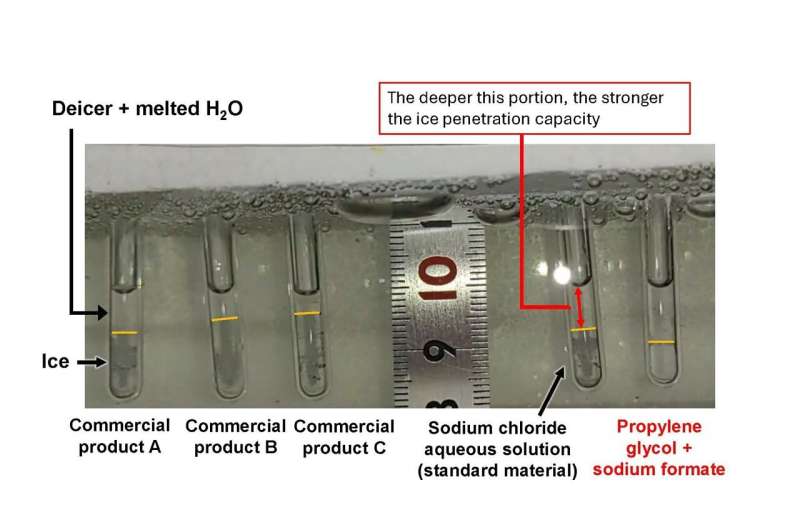
An Osaka Metropolitan University research team has found a deicing mixture with high effectiveness and low environmental impact after using machine learning to analyze ice melting mechanisms of aqueous solutions of 21 salts and 16 organic solvents. The research appears in Scientific Reports on June 7, 2024.
The dangers of frozen roads, airplane engines, and runways are well known, but the use of commercial products often means short-term safety over long-term environmental degradation. Seeking a better product, Osaka Metropolitan University researchers have developed a deicing mixture offering higher performance than deicers on the market while also having less impact on the environment.
The team, made up of graduate student Kai Ito, Assistant Professor Arisa Fukatsu, Associate Professor Kenji Okada, and Professor Masahide Takahashi of the Graduate School of Engineering, used machine learning to analyze ice melting mechanisms of aqueous solutions of 21 salts and 16 organic solvents. The group then conducted experiments to find that a mixture of propylene glycol and aqueous sodium formate solution showed the best ice penetration capacity.
Because of the mixture’s effectiveness, less of the substance needs to be used, thereby also lessening the environmental impact. It is also not corrosive, preventing damage, for example, when used for airport runways.
“We are proposing an effective and environmentally friendly deicer that combines the advantages of salts and organic solvents,” said Dr. Fukatsu.
The results of this research also provide new insights into the ice melting process.
“The development of highly efficient deicers is expected to make deicing and anti-icing operations easier,” Professor Takahashi added. “This will also lessen the environmental impact by reducing the amount of deicer used.”
More information:
Machine learning-assisted chemical design of highly efficient deicers, Scientific Reports (2024). DOI: 10.1038/s41598-024-62942-y
Citation:
Machine learning helps find advantageous combination of salts and organic solvents for easier anti-icing operations (2024, June 7)
retrieved 7 June 2024
from https://phys.org/news/2024-06-machine-advantageous-combination-salts-solvents.html
This document is subject to copyright. Apart from any fair dealing for the purpose of private study or research, no
part may be reproduced without the written permission. The content is provided for information purposes only.







